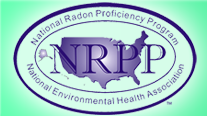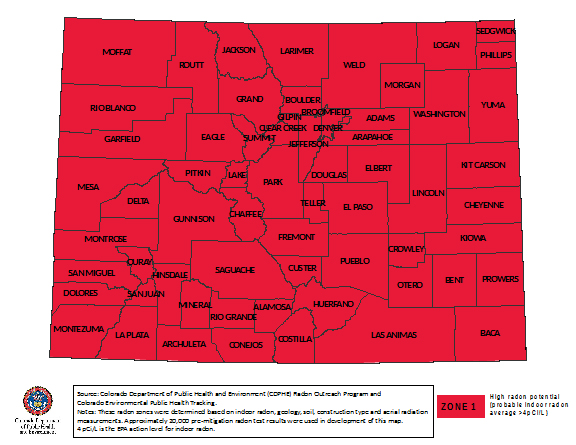

- CUSTOMER SERVICE
- CRAFTSMANSHIP
- QUALITY OF WORK
Protocols put in place by the EPA and NRPP (National Radon Proficiency Program) are followed so the most effective radon mitigation system is installed to improve the indoor air quality of your home.
Just as important we concern ourselves with how and where a mitigation system is installed so that the aesthetics of the system are pleasing as well.
What is Radon?
RADON is a colorless, odorless, tasteless invisible gas.
The EPA has listed radon the second leading cause of lung cancer, cigarettes as number one. As naturally occurring uranium in the soils break down, radon is created.
As radon enters our home we breathe it into our lungs. When radon decays, Alfa rays are emitted which can cause damage to the lungs.
This is why testing your home or business for elevated radon levels is recommended.
The EPA has set the Recommended Action Level at 4pCi/L.
Radon in Colorado
But, I’ve been told there isn’t any radon in Colorado?! According to K.R. Tremblay Jr, a Colorado State University Extension housing specialist and Professor, Colorado does have radon. From a report posted on CSU Extension’s website, found here,
“Surveys show that homes in most Colorado counties have the potential for radon levels above EPA’s recommended action level. EPA has developed three radon designations, ranging from Zone 1 (red) with the highest recommended action level to Zone 3 with the lowest recommended action level. The EPA map of radon zones for Colorado (Figure 2) shows the majority of counties are designated as Zone 1, with no counties in Zone 3.”

